Contents


Onions and garlic contain a large amount of vitamins, essential oils and volatile compounds. They have long been used not only for food, but also for the prevention and treatment of many, primarily colds. However, even the specific chemical composition does not save plants from diseases and pests.
How to recognize a pest
Diseases can affect both plants in the garden and bulbs during storage. Signs of the disease may be discoloration or spotting of the feather. In particular, diseases include drying of the aerial part, softness of the bulbs or the appearance of white, grayish or black plaque on them.
Lukovaâ flies
Very similar to the common fly. The larvae are dangerous for onions.
The onion fly emerges from hibernation around mid-May, and lays eggs in early June. The larvae hatch on the fifth or tenth day, penetrate the young bulbs and eat them out from the inside.
The feathers of the affected plants turn yellow and dry up, starting from the tips, the bulb itself rots. One larva per month of growth can damage the entire garden. A month later, the larva pupates, and soon a new generation of flies appears.
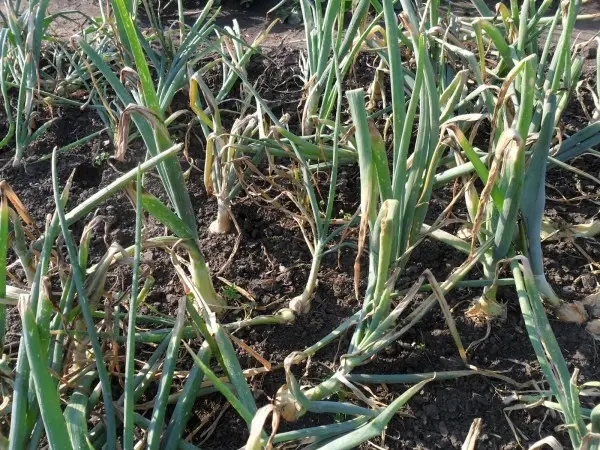
The fight against this pest begins with prevention. After harvesting the onion, you need to carefully sort it out and remove all damaged bulbs. The remaining onion – dry. In the spring, before planting, sort out the bulbs again and again select the damaged ones.
It is strongly not recommended to plant onions in the same area two years in a row. In fact, the correct crop rotation of onions involves the return of planting to the same place no earlier than in the fourth or fifth year, it is good to sow onions and garlic in the place where cabbage, nightshade or pumpkin crops were last year. The onion fly hibernates at a depth of up to 20 centimeters, so in the fall the beds need to be dug deep and all plant debris removed.
The onion fly does not like the smell of carrots, so it is advisable to plant onions and carrots (or garlic and carrots) on the same bed, alternating rows. Before planting, onion sets must be disinfected in hot water. To do this, hold it in water at a temperature of 45-46 degrees, for ten to a maximum of fifteen minutes.
The onion fly is afraid of salt. You can treat the beds two or three times per season. The first treatment is carried out when the seedlings are about 5 cm. For each subsequent treatment, the amount of salt must be increased. The first ratio is 300 grams per 10 liters, then 400 grams and, if the treatment is carried out for the third time, 600 grams of salt.
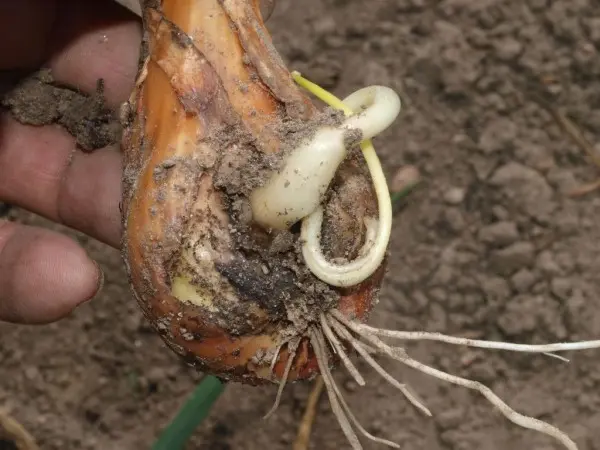
The beds (the plants themselves) should be watered with brine, and after four or five, rinsed with plenty of clean water. The interval between treatments is about two weeks. Within a week after the departure of the onion fly, the aisles of onion plantings can be treated with a mixture of tobacco dust and sunflower ash. Lime or carbon ammonium salt is also allowed.
Video “Recommendations for onion pest control”
Useful tips for the destruction of pests and the treatment of diseases of green onions and garlic.
Hidden trunk
The onion secretive trunk, also known as the weevil, is a small beetle of dark gray or black color. Both beetles and larvae are dangerous for the plant. The body of the beetle is up to 2,5-2,7 mm long, with a characteristic proboscis bent downwards. The larva is a yellowish caterpillar with a brown head, 6-6,5 mm long. The pest feeds on the pulp of the leaves, which causes white dots or stripes to appear on it.
Especially affected leaves dry up. Despite the fact that the secretive hunter does not directly harm the bulb. Due to the damage done to the green part of the plant, the onion yield in the infected area is significantly reduced.
The secret-proboscis begins activity quite early – in mid-April, and feeds on initially unharvested leftovers or sprouted onions. In late April or early May, females lay their eggs inside tubular onion leaves. After a week or two, the hatched larvae migrate to the leaves.

The larvae actively feed on the pulp of the leaves, and after three weeks they enter the soil and pupate. This usually happens in July. A new generation of beetles appears in the same summer and continues to feed on the leaves and inflorescences of onions. The fight against this pest is primarily based on crop rotation.
A new planting of onions must be placed in a place as far as possible from the previous planting, and always carefully remove all the remains and waste of onions. Further, at the time of pupation of the larvae, it is necessary to regularly loosen the onion aisles to a depth of 5-10 centimeters. This is necessary in order for the maximum number of pupae of the secretive proboscis to be on the surface of the soil and die.
Onion crops can act as a bait for a secretive hunter. They can be placed next to an ordinary bow, and then destroy the batun beds along with pests. It is desirable to do this at the stage of the first white stripes on the leaves.
This is very important, because during this period the larvae are just starting to grow and do not have time to infect the soil with pupae. A mixture of tobacco dust and wood ash repels the secretive hunter well. To do this, in a ratio of 1 to 2, sprinkle the plants themselves after watering), tansy and celandine (sprinkling with dry powder or spraying plants with decoction).
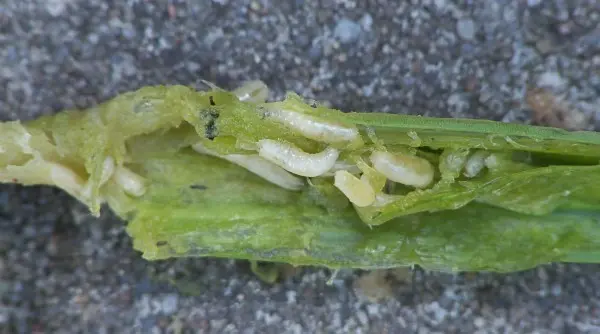
Triptsy
Thrips or thrips are a whole group of pests. These are insects of small size (on average, the body of an adult is up to 1 mm in length) of discreet coloration, mainly herbivorous. Unlike the previous two, thrips are not only pests of onions and garlic, but also cabbages, cucumbers, tomatoes, potatoes, ornamental and even indoor plants.
Thrips are prolific and develop rapidly, during the season they can give from 3 generations in the open field and up to 8 in greenhouses. Thrips larvae suck the juice from the vegetative parts of plants. With their significant damage, the stem is bent, the bulb softens, the plant lags behind in growth and does not produce seeds.
The most dangerous for onions are tobacco thrips and onion thrips. Measures to combat them are the destruction of the food base and individuals that are in the soil at rest. This means that in the fall you need to carefully dig up the beds, to a depth of 15-20 centimeters (the bulk of thrips winters at a depth of 5-7 centimeters) and remove as much as possible any plant debris and roots that can serve as food for the pest. The greenhouse after harvesting can be treated with 0,15% karbofos.
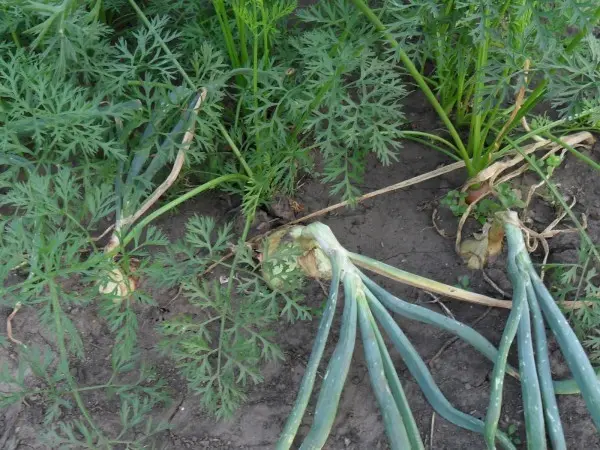
In the summer, deep loosening of onion row spacings is effective in order to destroy thrips pupae. Also, to protect onions from thrips, it is recommended to maintain crop rotation and not plant onions next to other crops that are the food base of the pest: cucumbers, cabbage, tomatoes. With small lesions, it is effective to spray plants with decoctions of odorous and caustic herbs of celandine, tobacco, mustard, and hot pepper.
To do this, you can take 1 kg of fresh hot pepper and boil in 10 liters of water for an hour. Then insist for a day and pour into dark bottles. Before use, 125 ml of pepper concentrate is diluted in 10 liters of water and the plants are sprayed with this solution. The treatment is repeated at intervals of two weeks.
Winter and potato scoops
Scoops are small (up to 4,5 cm in wingspan), inconspicuous shades of a butterfly, which are universal pests. Scoop caterpillars infect plantings of various types of cabbage, potatoes, tomatoes, onions, carrots – in fact, all garden crops, and both aerial parts of plants and roots are eaten. In late August-September, the females lay eggs.
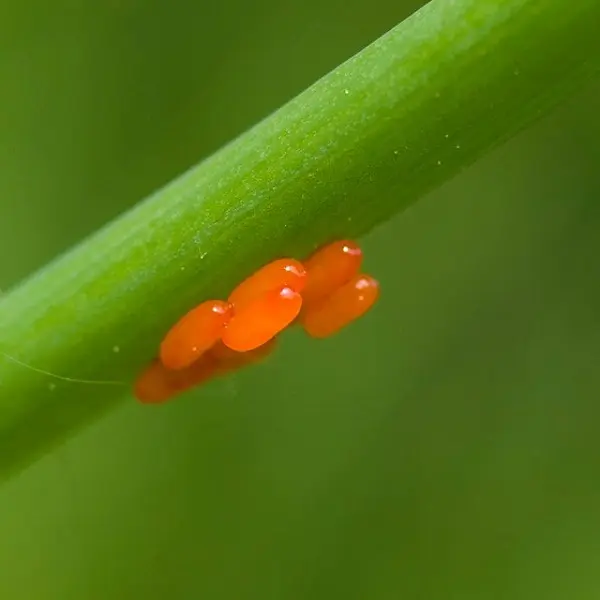
Caterpillars emerge from the overwintered eggs in late April-early May, which begin to actively feed on both cultivated and weed plants. Caterpillars pupate no later than mid-July, in the soil, at a depth of 6-10 cm. After a while, butterflies emerge from the pupae, which lay new eggs.
Based on such a life cycle of scoops, the fight against them, first of all, consists in carefully digging and loosening the soil. This is done in order to destroy as many eggs and pupae as possible by removing weeds. Because they allow the caterpillars to soak before the active growth of cultivated plants.
Of the well-known folk remedies against scoops, you can apply a decoction of wormwood. It is necessary to boil 1 kg of grass for a volume of 3 liters of water for 15 minutes. Processing is carried out twice, with a break of a week.
An infusion of white mustard is also suitable. To prepare, you need to insist 2 grams of the powder in a glass of water for two days, then strain and dilute with plain water to a volume of 1 liter). Unfortunately, such a pest as the winter cutworm is quite aggressive, and with a significant damage to the plantings, industrial broad-spectrum insecticides may be needed.
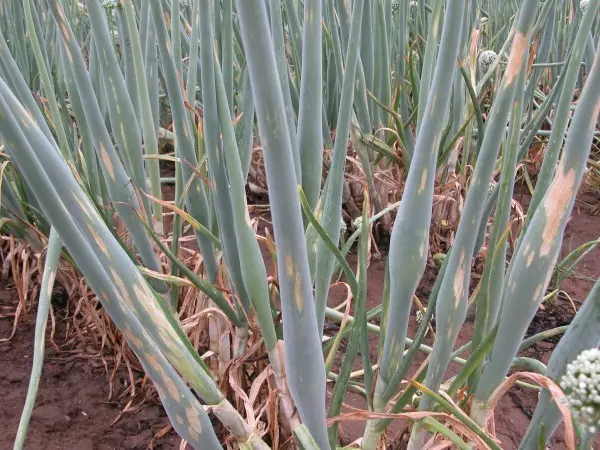
Bow Protection Tips
Thus, the optimal protection of onions and garlic from pests will be:
- complex wrestling throughout the season;
- compliance with crop rotation (thus, onion and garlic pests are left without a forage base for the next season);
- deep digging of the soil in autumn, with the removal of plant residues and weed roots;
- destruction of pest-infected parts of plants;
- thorough drying of the onion seedling and checking it before planting;
- loosening the beds of onions and garlic to a depth of at least 10 cm several times per season, which allows you to destroy a significant part of the pupae;
- processing plants with various infusions of herbs and seasonings that repel insects;
- treatment of plantings with a solution of ordinary table salt;
- use of tobacco dust. This adjuvant is sold in specialized stores and, when used on beds, disorients pests by interrupting the smell of plants;
- in case of excessive occurrence of pests, agrochemistry will have to be used.
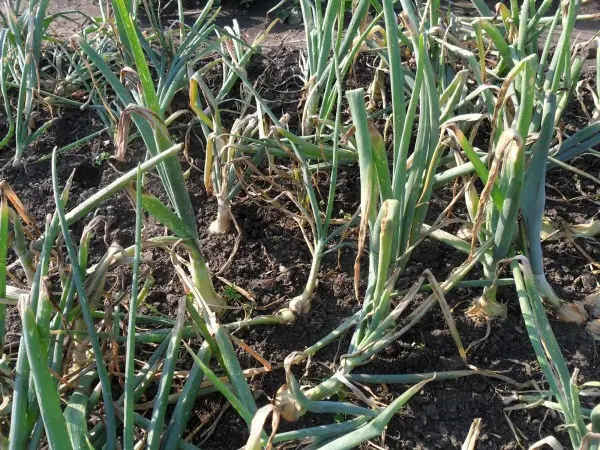
Video “How to deal with onion diseases”
Useful tips for eliminating the cause of the appearance of yellow feathers in onions, its treatment and prevention from pests.









